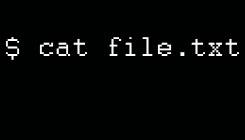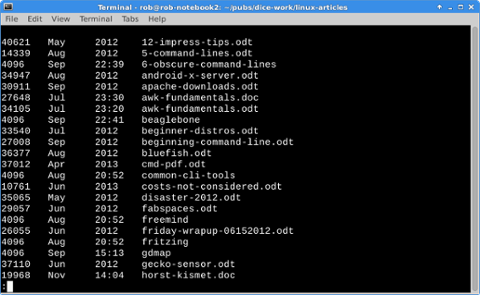
I do a fair amount of command line work on my Asus Transformer Prime, many times connected to a remote Linux machine using SSH. I thought I'd get into how to get everything configured so you can be productive, using a terminal on Android. To do it, you'll need to download and install a couple of apps from Google Play.
Terminal IDE: This is a full featured terminal program with operating system level commands built in. Once launched, you'll get a standard text terminal, much like any old Linux command line. It also includes a version of BusyBox that rolls up a bunch of traditional Linux command line programs into a big Android app. Commands like ls, cat and ps are simply typed in, and the results then printed out on the screen. You can use pipes (|), redirection (>), and shell-style scripting. How cool is that? It even has sophisticated programs like Awk, Sed and Sort. Oh wait... nobody uses those antique Unix relics anymore.
Hackers Keyboard: This puts arrow and number keys conveniently on the keyboard. For months, repeatedly typing in long strings of commands was a real pain for me. In a standard Linux terminal, you just hit the up-arrow to recall a command. Multiple taps step you through all the commands you've typed, seemingly since the beginning of time. Standard Asus and Android keyboard layouts don't include arrow keys. While the Asus enhanced keyboard has numbers across the top, the standard English model does not. It's tedious to have to type the "?123" key every time you want to input a number. The Hackers Keyboard fixes all that. Once it's installed, you'll be able to switch between keyboards at will. For example, if you start Chrome and tap the address bar, a little keyboard will appear in the system tray at the lower right corner of the tablet screen. Tap the keyboard icon and simply select the keyboard that you want to use. Next, start Terminal IDE. You'll see several menu items in the middle of the screen. Click on the Terminal IDE button to begin. If you want to exit, use the Shutdown button. Terminal IDE supports multiple terminals. Click the "Menu" button at the bottom of the screen, then select "Terminal List" to switch through your options. You can cut and paste text using the "Copy/Paste/Email" button, although I've found no way to highlight anything on the terminal screen. Capturing text from a Web page or an editor can be pasted into Vi, though, which is sort of useful. And everything captured in a terminal session can certainly be pasted into an external document for tutorials or future reference. Once in a terminal, you have access to all kinds of Linux-like commands, via BusyBox. Common commands like ps, ls, cat and grep function just like on a Linux machine. As you'd expect, options are somewhat limited. For example, ps only has the -w option. It gives a wide-screen view. (Other commands that I frequently use are ifconfig, pwd, cal, and tail.) You can also ssh into remote machines. For example, "ssh rob@192.168.1.101" brings up a command line on my Linux notebook. Coupled with the Hackers Keyboard up arrow and number key capabilities, Terminal IDE on the Android tablet gives me a very capable, very portable way to manage remote machines. Give them a try. I think you'll find they're great tools for system admins and developers.
Related Links
- Terminal IDE [Google Play]
- Hackers Keyboard [ Google Play]


